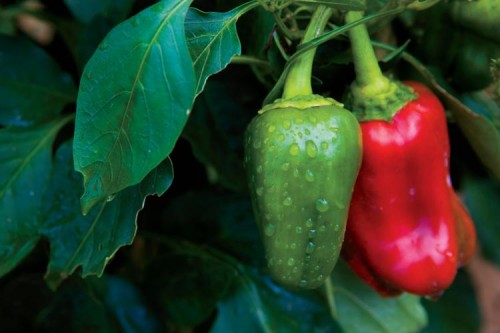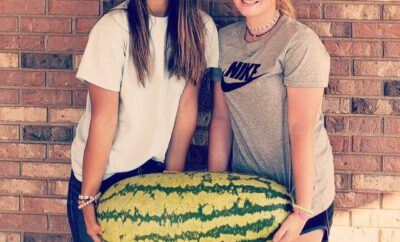Grow Backyard Veggies With This Space-Efficient Gardening Guide
Vegetable gardening has never been so popular. Whether it’s for economic reasons or because of awareness of the local slow food movements, growing your own tomatoes is in.
So is space-efficient gardening. It goes by a variety of names (raised-bed gardening, intensive gardening, square foot gardening, block style gardening, close-row gardening, wide-row gardening, and vertical gardening); but whatever the name, the trick is to eliminate unnecessary walkways by planting vegetables in rectangular-shaped beds or blocks instead of long single rows.
Don’t think you have enough space to grow your own veggies? Think again. Raised-bed gardening allows you to concentrate soil preparation in a small area, resulting in the efficient use of soil amendments and an ideal environment for vegetable growth. Construct the frames out of wood, stone, brick or concrete block to give your raised beds a border and to hold an organically rich soil in place. You can also create free-standing mounded beds to your desired width and length. Such space-efficient gardening can increase yields five-fold compared to the traditional row-style garden and 15-fold for smaller kitchen garden vegetables.
Raised beds provide many advantages. They look neat and tidy (fewer weeds!) and make it easy to add drip irrigation and protective features. An ideal width of a framed raised bed is 4 feet if it is free-standing and accessible from all sides. If you locate your bed up against a wall, such as the side of your house, and can only access it from one side, don’t make beds any wider than 2 feet for easy access to all the plants. The height of a raised bed should be at least 6 inches. Deep-root crops such as carrots, potatoes and leeks do well when they have a growing depth of 12 inches.
Soil preparation is the key to successful intensive gardening. Plants compete for available water and nutrients, and adequate supplies must be provided. I like using a commercial-grade, composted growing media used by the greenhouse and nursery industry. These growing media are great at holding water, and they contain all the nutrients your plants need (no fertilizing!). You also don’t have to dig, till, shovel or wheelbarrow soil. You typically can buy such media bagged from a garden center, nursery, co-op, or nursery and greenhouse supply company. If you prefer to use soil, have your soil tested (contact your county’s UT Extension office) so you know its pH, organic matter and nutritional status, and which amendments it might need.
Space-efficient gardening uses an equidistant spacing pattern – the center of one plant is the same distance from the centers of all surrounding plants. The recommended distance from one plant to the next should be listed on the seed packet under row-spacing recommendations. The close spacing tends to create a nearly solid leaf canopy, acting as a living mulch, decreasing water loss and keeping weed problems down. However, plants should not be crowded to the point where diseases arise or competition causes stunting.
Growing plants vertically is another intensive gardening technique and a great way to adapt gardening for those with physical challenges. Using trellises, nets, strings, cages or poles to support growing plants upward constitutes vertical gardening. Vining and sprawling plants, such as cucumbers, tomatoes, melons and pole beans are obvious candidates for this type of gardening. Some plants entwine themselves onto the support, while others may need to be tied. Remember that a vertical planting will cast a shadow. Plant shade-tolerant crops near the trellises so your sun-lovers will not be shadowed. Plants grown vertically may have lower yields (but not always). Still, the yield per square foot of garden space is high. Because vertically growing plants are more exposed than non-staked plants, they dry out faster and may need to be watered frequently. Fast drying is an advantage for those plants susceptible to fungus diseases.
To use raised beds efficiently, keep them filled. When a spring vegetable is harvested, plant a summer vegetable in its place. Follow summer vegetables with fall vegetables. Small vegetables such as radish and lettuce can be interplanted between tomatoes and other large vegetables. They will mature and can be removed before the tomatoes need the space. Peppers can be interplanted between lettuce plants in the same way. Relaying is another common practice, consisting of multiple plantings of one crop to provide a continuous harvest. Sweet corn and bush beans are usually recommended for relaying, but cucumbers or other crops that yield for two weeks or less are also good prospects.
A space-efficient garden requires detailed planning, but the time saved in working the garden and the increased yields make it well worthwhile.
Space-Efficient Gardening Resources
Lots of resources are available to help you with space-efficient gardening. Books, articles, and UT Extension publications abound. Here are a few to get you started:
• Square Foot Gardening by Mel Bartholomew (scroll down for a video featuring Mel)
• How to Grow More Vegetables and Fruits (and Fruits, Nuts, Berries, Grains, and Other Crops) Than You Ever Thought Possible on Less Land Than You Can Imagine by John Jeavons
• UT Extension Home Garden Publications

















There is a real good book at the Dollar General about square foot gardening,it’s five dollars grab your copy before they are all gone.
I would like some advice about why I can not get turnips to produce a bulb or root ball. for the last 4 years I have not been getting the veg to produce the root balls that I like so much.
I have changed seed packets 3 times thinking the seed wasn’t good, but it didn’t make a difference.
when I sowed them I worked up the soil and sprinkled them on top of soil and just covered them with a little amount of soil.
should I have put them deeper than i did?
I used to raise them years ago when I had a bigger garden. but I can’t seem to get them to produce.
thank you bob alvey
I’ve sent your questions to our gardening guru, Dr. Sue, director of the University of Tennessee Gardens. I’ll let you know what I hear back. In the meantime, you might try checking with the UT Extension in your area: https://utextension.tennessee.edu/Pages/default.aspx